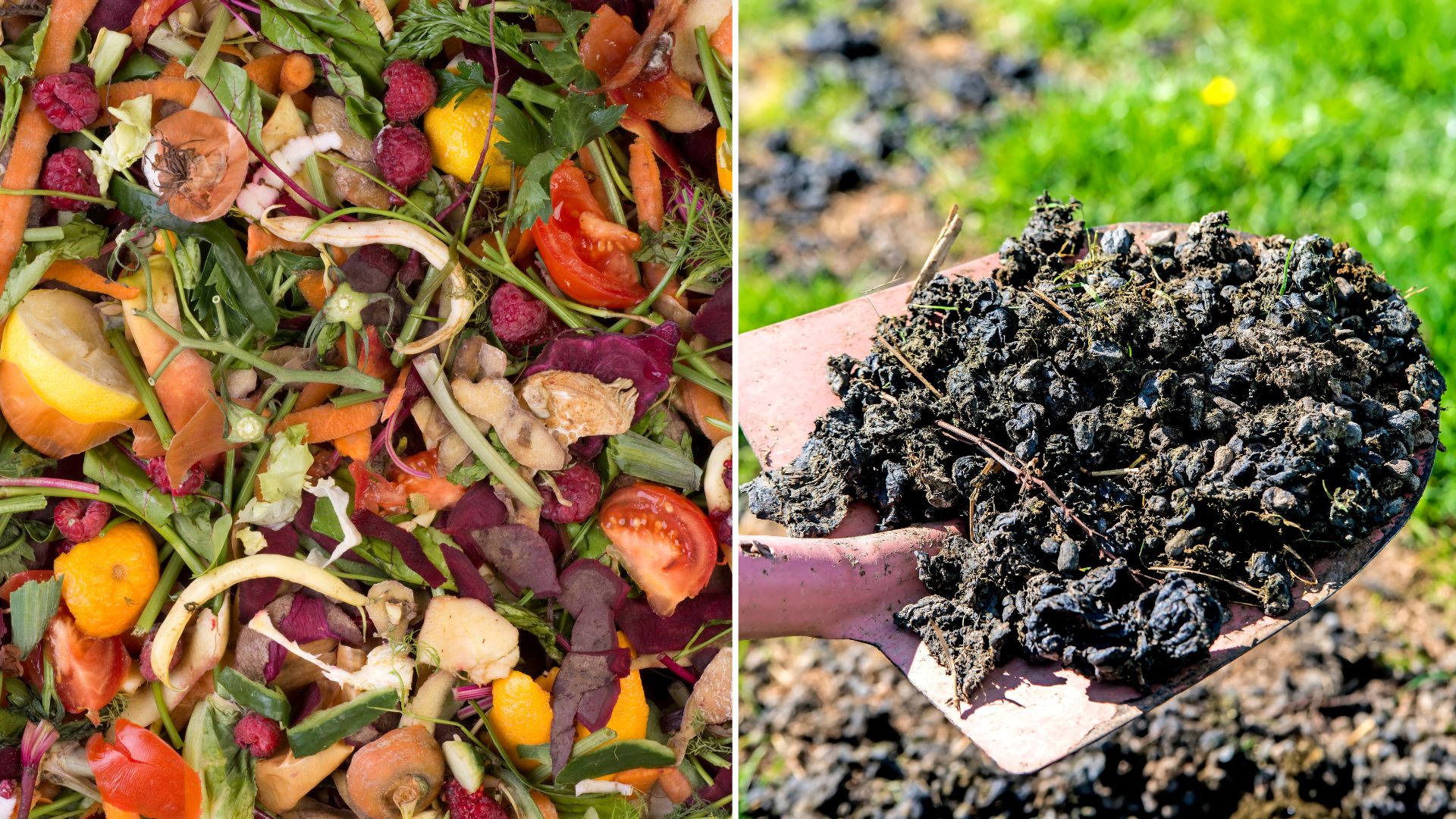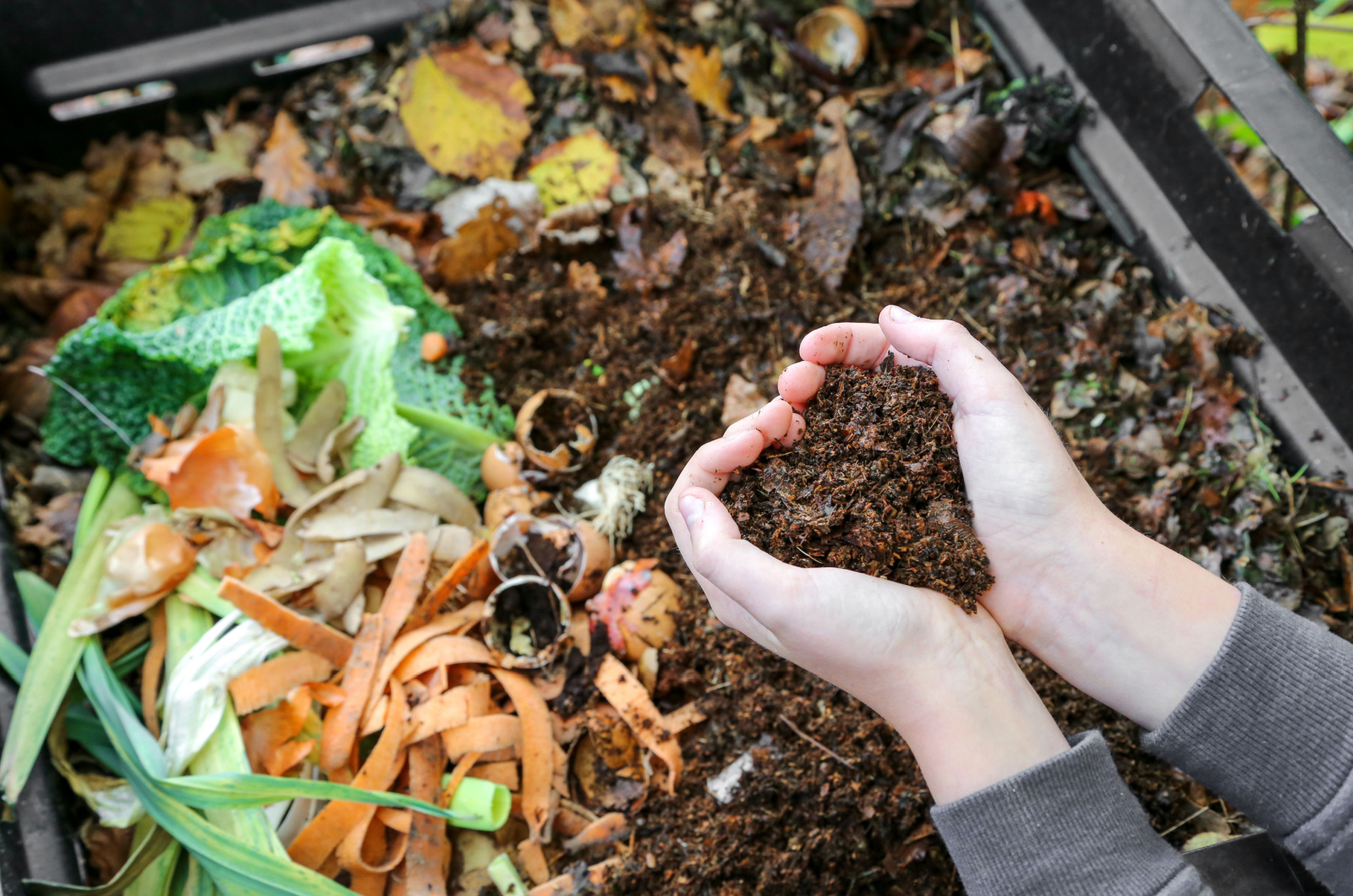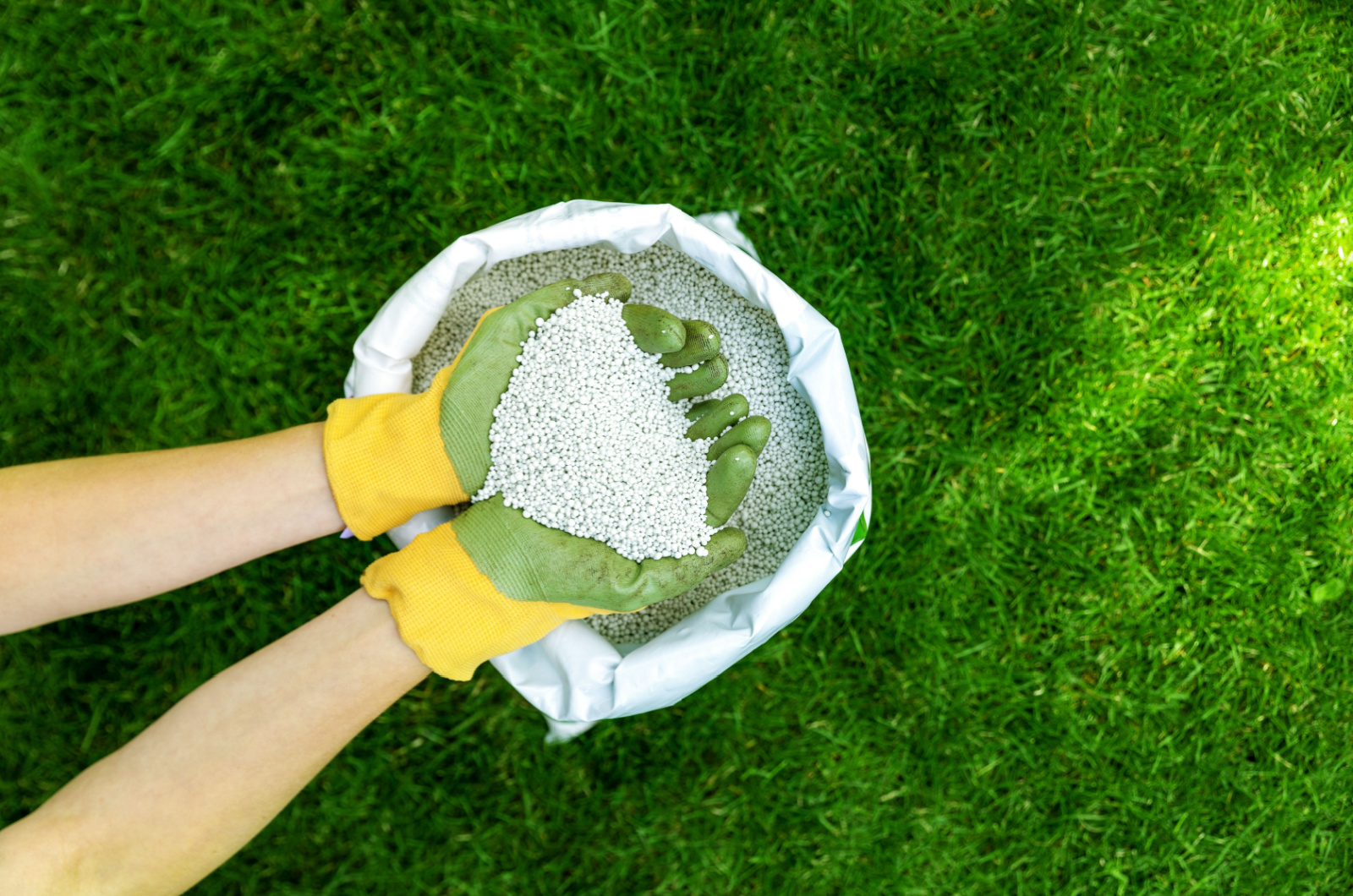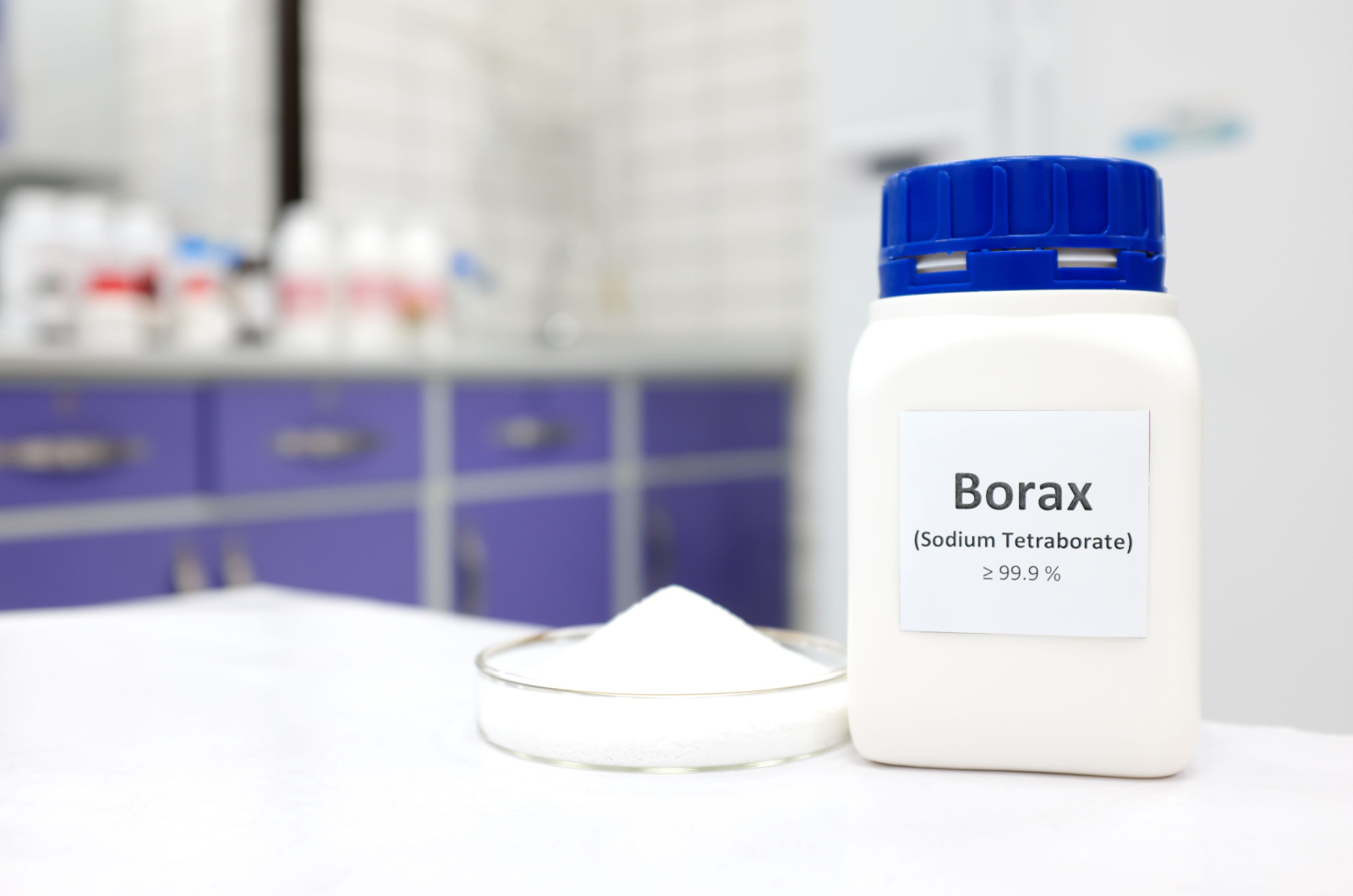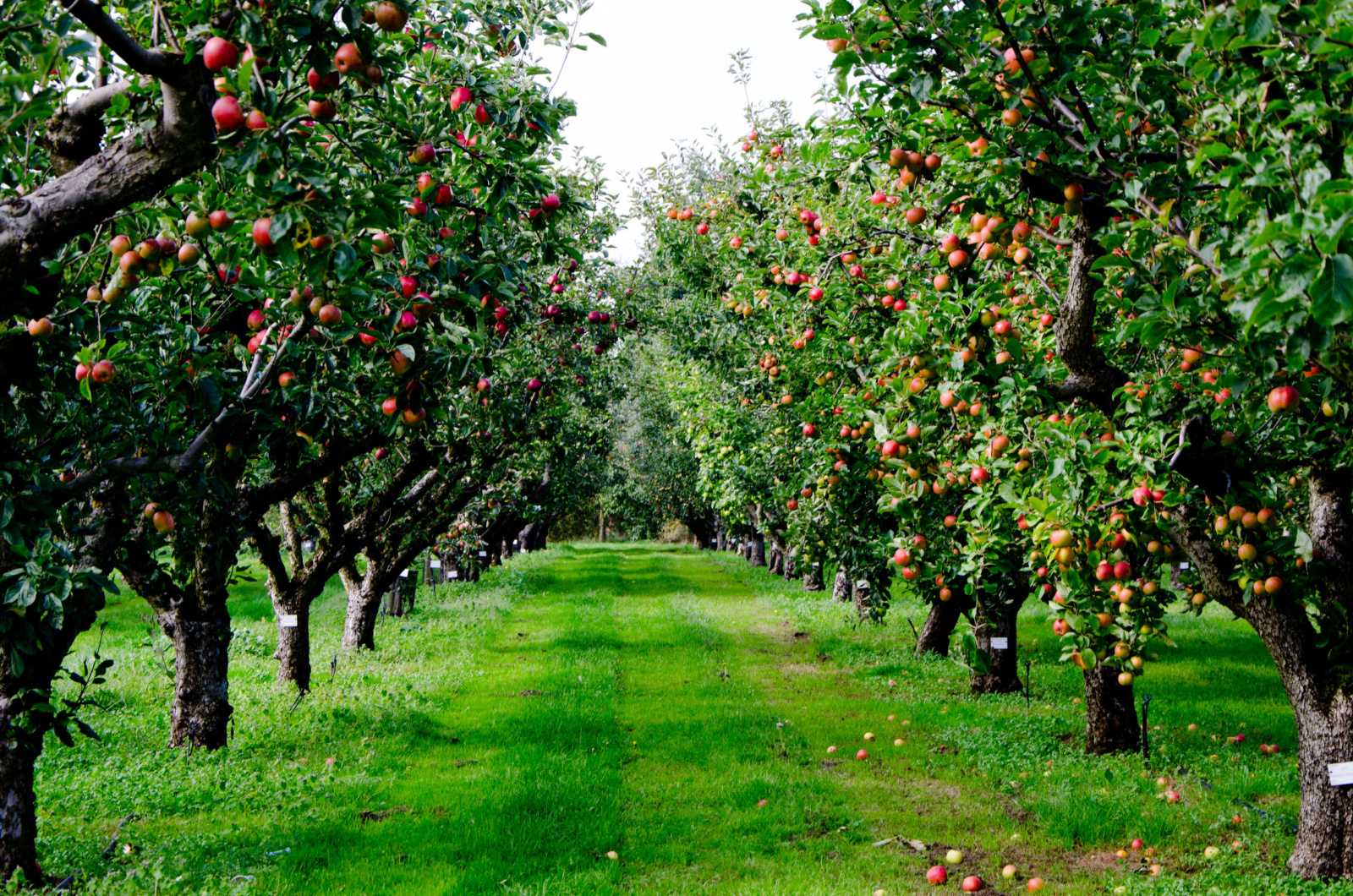Getting a bountiful harvest is the dream of every apple grower. However, it’s not always easy to get there. Generally speaking, apple trees aren’t hard to maintain, but there are some things to pay attention to.
Fertilization is one of the main aspects of apple tree care and can help these trees develop healthily and produce an abundance of delicious fruits.
In this article, I’ll show you the 5 best fertilizers for apple trees, and when and how to apply them.
Let’s get started!
Do Your Apple Trees Need Fertilizer?
Before I move on, I should answer a common and important question related to the necessity of fertilization in apple trees.
There are, indeed, some cases when your apples don’t require supplemental feeding. If you feed them when they don’t need it, it can have an adverse effect. Instead of focusing on fruit production, your trees may only display new growth.
One of the ways to check if your apples need food is by measuring their size, i.e., the growth they display each year.
For instance, a juvenile tree typically puts on about 12-18 inches of growth per year. On the other hand, adult trees may grow from 8 to 12 inches in a single year.
If your apples are somewhere in between the recommended range, then you’re doing a good job regarding fertilization. There’s no need to change anything and you can simply continue with the same schedule.
But if your apples grow way faster than they should, this isn’t actually a good thing and you need to cut back on fertilizing unless you want a poor yield.
Apple cultivation is all about patience. If you grow dwarf varieties, they’ll take approximately 3 years to reach their full size. Standard varieties, on the other hand, may take up to 8 years to develop fully and start bearing fruit.
Now, let’s see which fertilizers to use!
1. Organic Compost
If you want to go all-natural and give these trees an eco-friendly nutrient boost, organic compost is the best option.
It would be best to feed your apple trees with this ingredient in spring, specifically in March or April. This is the optimal time to feed all fruit trees.
The layer of compost should not be thicker than 2-3 inches and it should cover a 3 foot radius around the trunk of your apple tree.
If your compost is rich in nitrogen, it’s a win-win situation because apples need this nutrient to grow healthily. As an added bonus, this type of compost will suppress weed development.
Do not pile up your compost around the tree trunk because it will encourage the soil to retain too much water, which is dangerous for the roots of apple trees.
2. General Purpose Fertilizer
A general purpose fertilizer with an NPK ratio of 10-10-10 is another type of fertilizer you can use for your apple trees.
After you plant your tree, you should wait for approximately a month before adding fertilizer. Then, put on your gardening gloves and fill a cup with a triple 10 fertilizer.
Spread the fertilizer in about a 2-foot circle, making sure the distance between the trunk and the fertilizer is 6 inches.
Repeat the process some time in June; use the same amount of fertilizer and pay attention to distance.
In the second year of growth, you can increase the amount of fertilizer. Take 2 cups of a triple 10 fertilizer and spread it in a 3-foot radius. Apply the next round at the beginning of summer, i.e., June.
Feed As Your Apple Trees Grow
As these trees grow further, their feeding needs may vary depending on the cultivar. If you have standard varieties you should add approximately 2 cups of triple 10 until the trees are about 6 years old.
You can then switch to nitrogen-rich fertilizers, such as 33-0-0; use 4 cups of fertilizer per feeding.
When your apples reach the ninth year of growth, you can continue using a fertilizer rich in nitrogen, but this time increase the amount to 6 cups per feeding.
The bigger the tree, the bigger the radius for application. Adjust the radius according to the size of the apple tree canopy.
If you have dwarf varieties, you need to use a different feeding schedule and adjust the amount of fertilizer.
Once your dwarf apple trees are 3 or 4 years old, take 4 cups of a triple 10 fertilizer and apply it in a 4-foot radius. Increase the amount to 6 cups in the fifth and sixth year of growth and apply it in a 5-foot radius.
When these trees are seven years old (and older) you can use 2 cups of 33-0-0 fertilizer per feeding and apply it in a 5-foot radius.
Remember that your fruit-bearing apples don’t require nitrogen fertilizer unless they display less than 8 inches of growth each year.
3. Bone Meal
You’ve seen that nitrogen-rich fertilizers shouldn’t be used in juvenile apple trees. If you apply them to newly planted trees, they can burn the roots and cause irreparable damage.
But you can increase the levels of vital nutrients in the growing medium by applying bone meal. This potent ingredient has low nitrogen content but is rich in phosphorus, which ensures healthy root development.
Once you dig a hole for your new tree, mix approximately 3 pounds of bone meal into the hole.
Many growers use bone meal when making homemade phosphorus fertilizers.
If your apples lack this nutrient, the leaves will be small and delicate. Simply take 3 cups of bone meal and spread it around your tree; the radius should be about 8 feet.
The best time to plant these fruits is in early spring, i.e., April or May. The soil should be loose during this period and there shouldn’t be any muddy dirt on the shovel when you take it out.
4. Borax
If your apple fruits have small brown portions all over them, you should check for boron deficiency. (1)
Borax is typically used to fix this issue and you should apply it every 3-4 years. Once the spring arrives, take a cup of Borax and spread it below the apple tree canopy.
Always wear gloves when applying this ingredient. Borax can cause skin damage and is extremely dangerous if ingested or inhaled. (2)
5. Aged Manure
Apples in the second year of growth can significantly benefit from aged manure application. The best time to use this popular amendment is at the end of the summer or early fall.
Alternatively, you can wait until the temperatures in your region drop below 50 degrees Fahrenheit.
This type of soil amendment is rich in two vital nutrients: nitrogen and potassium; nitrogen will boost fruit production whereas potassium will ensure the healthy development of the foliage. It’s actually commonly used in improving garden soil.
You’ll need approximately 10 pounds of aged manure per tree, and the distance between the aged manure and the trunk should be about 2 feet.
The layer of aged manure shouldn’t be thicker than 2-3 inches. Simply take a garden rake and spread it evenly, paying attention to the distance between the trunk.
After application, irrigate everything well to help the apple tree roots absorb nutrients and encourage healthy bud development on the branches.
There’s no need to reapply aged manure each year. You should only do it if the tree isn’t growing enough; young trees grow less than 12 inches and mature trees less than 8 inches.
Growing The Best Apples
Feeding your apples will give you the best yield possible. Of course, you need to follow the instructions based on the type of fertilizer you decide to use.
A rule of thumb is to monitor the growth of your apple trees. Excess nitrogen may damage these fruits, so pay close attention when applying compost, aged manure, or general-purpose fertilizers.
Bone meal will give juvenile apples a good head start, and Borax can treat boron deficiency when applied every 2-3 years.
Finally, make sure to meet all other requirements of apple trees, such as watering and pruning.
With proper care, your apples are destined to thrive!
References:
1. Boron Deficiency | Scouting Guide for problems of APPLE. (n.d.).
2. Cirino, E. (2023, June 19). Is borax toxic? Healthline.

